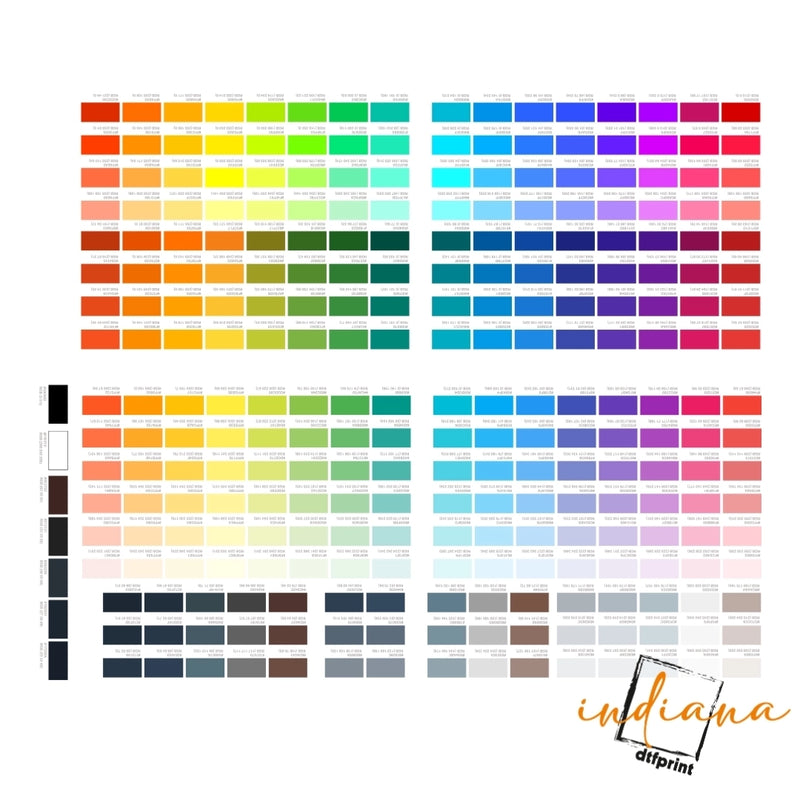The custom apparel market is booming—and if you're thinking about jumping in, there's never been a better time. But like any smart entrepreneur, you probably want to start lean, avoid big upfront costs, and still deliver high-quality products your customers will love.
That’s where DTF transfers (Direct to Film) come in. They’re changing the game for small clothing brands, home-based printers, and print-on-demand startups. In this article, you’ll learn how to start a profitable t-shirt business using DTF printing—step by step—without needing thousands in investment or complicated equipment.
Why DTF Transfers Are the Ideal Choice for Startups
DTF printing gives small brands a powerful edge:
- You don’t need to invest in expensive screen printing equipment.
- No limitations on fabric types—print on cotton, polyester, blends, denim, fleece, and more.
- You can print full-color designs, gradients, and photo-level detail—without minimums.
Whether you're starting a t-shirt line, personalizing shirts for events, or opening a print shop, DTF is one of the most beginner-friendly ways to get going.
Step 1: Choose Your Niche and Brand Direction
Before printing your first shirt, get clear on your brand identity. In the saturated t-shirt market, niche sells.
Ask yourself:
- Who are you creating shirts for? (e.g., pet lovers, fitness fans, gamers, moms)
- What style defines your brand? (funny quotes, artistic prints, minimalist, bold)
- What problems are you solving? (eco-friendly apparel, inclusive sizing, personalized gifts)
Tip: A niche helps you target your ideal customer better and reduces competition.
Step 2: Set Up Your Business Foundation
Even a small operation needs a proper business setup. Here's your checklist:
- Register your business name and choose a legal structure (sole proprietorship, LLC, etc.)
- Create a logo and brand visuals
- Open a business bank account
- Secure a domain name and create a simple eCommerce site (Shopify or WooCommerce works great)
- Sort your payment and shipping options
Keep things lean at the start—you can upgrade as you grow.
Step 3: Source Quality T-Shirts and Heat Press Equipment
You don’t need to buy thousands of shirts upfront. Start with a few blank tees in different colors and styles. Look for reputable suppliers like Gildan, Bella+Canvas, or Cotton Heritage.
Here’s what else you’ll need:
- Heat Press Machine: A 15”x15” clamshell or swing-away press is perfect.
- Teflon or parchment paper
- Blank t-shirts in various sizes
- DTF transfers (more on that below)
Step 4: Create or Buy Your Designs
Designs are the heart of your brand. If you have graphic design experience, use tools like Adobe Illustrator, Photoshop, or Canva. If not, hire a designer from platforms like Fiverr or Upwork.
Tips for DTF artwork:
- Create at 300 DPI resolution
- Save as transparent PNG files
- Avoid overly thin lines or blurry images
- Make sure colors pop and contrast well
Step 5: Order Custom DTF Transfers Online
Now that you have designs ready, it’s time to order DTF prints.
Instead of printing them yourself (which requires expensive machines), partner with a reliable DTF transfer supplier like indianadtfprint.com.
Here’s how it works:
- Upload your design to their site
- Choose your sheet size (single image or gang sheet)
- Select your quantity
- Get it delivered to your door, ready to press
No ink mess. No setup headaches. Just pro-quality transfers every time.
Step 6: Apply the Transfers with a Heat Press
Once your transfers arrive, the application process is quick and simple.
How to apply DTF transfers:
- Pre-press the t-shirt for 5 seconds to remove moisture
- Position the DTF transfer on the fabric
- Press at 300°F (150°C) for 10–15 seconds using medium pressure
- Let the transfer cool, then peel the film (hot or cold peel depends on the type)
- Optionally, press again for 5 seconds to seal the design
Result? A vibrant, durable, and professional-looking t-shirt.
Step 7: Build Your Online Store
With your t-shirts ready to go, it's time to launch online. You can start on platforms like:
- Shopify
- Etsy
- WooCommerce
- Amazon Merch
Your website should include:
- Product images from different angles
- Clear descriptions and sizing info
- Easy checkout and payment options
- Return and shipping policies
Don’t underestimate the power of great photography—it can make or break a sale.
Step 8: Promote Your Brand (Without Breaking the Bank)
Marketing doesn’t have to be expensive. Focus on organic and social strategies in the beginning.
Smart marketing ideas:
- Share behind-the-scenes videos of pressing shirts
- Run giveaways on Instagram
- Collaborate with micro-influencers
- Use TikTok to show off cool designs
- Start a newsletter for discounts and updates
- Blog about t-shirt styling, fashion tips, or DTF print care
Build an audience, not just customers.
Step 9: Scale Up with Confidence
As orders grow, start thinking about scaling:
- Offer bulk orders for schools, events, or businesses
- Add new apparel items like hoodies, caps, or tote bags
- Outsource fulfillment to save time
- Launch seasonal or limited-edition collections
Keep reinvesting in your business, and listen to customer feedback—it’ll guide your evolution.
Final Thoughts
Starting a custom t-shirt business using DTF transfers is not only easier than ever—it's smart. You get pro-level quality, flexibility, and fast turnaround without huge investments. And in a world where customers expect fast, personalized products, that’s a serious advantage.
Whether you’re a side hustler or a full-time entrepreneur, DTF transfers give you the creative freedom and production power to bring your vision to life.
Ready to take the leap?
Start designing your collection today and order your custom DTF prints at indianadtfprint.com—USA’s trusted DTF supplier for custom transfers, gang sheets, and bulk prints.











